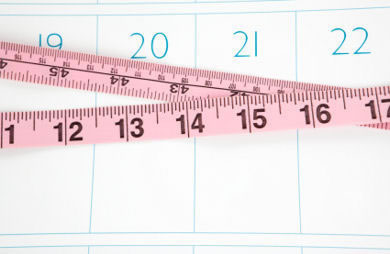Before you begin, it’s important to make sure you have a good pair of shoes. Running does not require a large investment when it comes to equipment, but quality running shoes are a must-have. Running shoes are specially designed to reduce the amount of shock that travels up your leg as your foot strikes the ground (which is significant in a high-impact activity like running). To find the right shoes for you, visit a specialty running store. These stores have trained professionals who will find a shoe to fit your needs. They might watch you run on a treadmill or down the sidewalk to get an idea of your form. Although you might pay a little more than you would at a department store, it is worth the investment in the long run.
So how do you start? Do you just lace up your shoes, take off running, and see how long you can last? Not exactly. First, realize that it may take a little while to build up your endurance. But the good thing is that if you stick to a regular program, you can see positive results in a short period of time.
You should be able to walk 20 to 30 minutes comfortably before you start running. If that seems like a lot, start by building up to this level, then incorporate running into your routine as you become stronger and fitter. Once you can easily walk this distance, begin to incorporate short running sessions into the routine. For example, a good starting point might be to walk four minutes, then run for one minute. Repeat this walk/run cycle for your entire workout.
Your goal is to slowly increase the amount of time you run, while decreasing the amount of time you walk. The running sessions should be challenging, so as one minute of running becomes easier, increase to two minutes, and so on. Before you know it you’ll be running for 30 minutes straight! And always remember to include a warm-up, cool-down and stretch in your program.
Many beginning runners complain of an inability to catch their breath while they run, causing them to stop for frequent walking breaks. If you experience this problem, slow down and relax—after all, it isn’t a race. One of the biggest mistakes beginners make is running too fast. If you can answer a question (but not comfortably carry on a conversation) while you run, your pace is about right. You shouldn’t be gasping for air. Concentrate on breathing from deep down in your belly as opposed to taking short, shallow breaths. It's okay to take a break if you need one—just start again as soon as you’re ready.
Proper form can help you conserve energy and avoid injury. Your posture should be upright—shoulders back,
Running can be a great addition to your workout routine! Just remember to talk to your doctor before starting any new activity, especially if you are a current or former smoker, are overweight, or if there is a history of heart disease in your family. Through consistent effort, you’ll be headed for your first 5K in no time!





.png)







